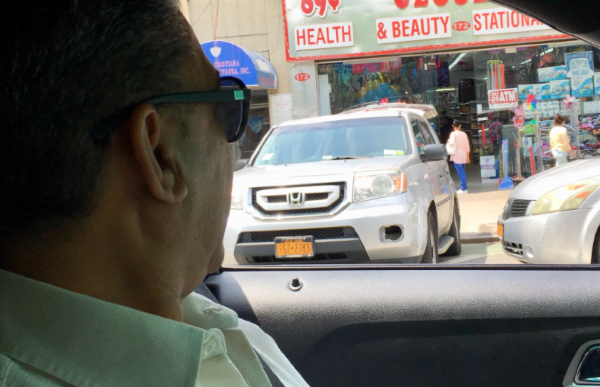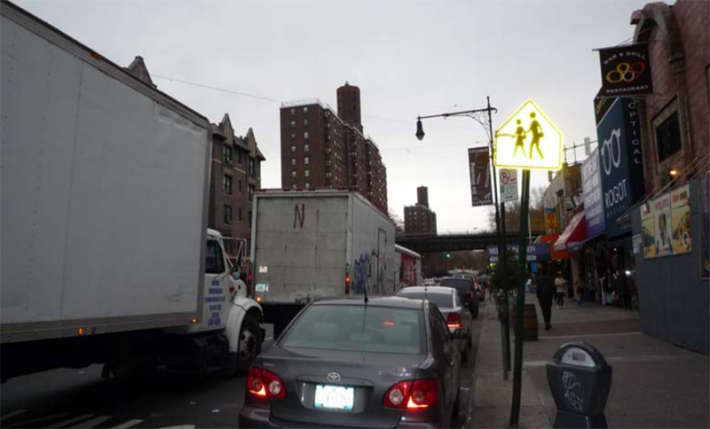When Upper Manhattan congressional rep Adriano Espaillat isn't challenging the Trump administration on immigration and other matters of national significance, he's ... fixated on making it more dangerous to walk and bike on Dyckman Street in Inwood.
On Saturday, Espaillat fired off a tweet scapegoating Dyckman's parking-protected bike lanes for "clogging a critical economic artery of our community [and] making it difficult for emergency response vehicles to maneuver through the area."
In a textbook case of pure, unadulterated windshield bias, Espaillat gathered his evidence against the bike lane while seated behind the wheel of his SUV, and rested his argument on photographs of another SUV parked illegally.
The Dyckman Street bike lanes are clogging a critical economic artery of our community & making it difficult for emergency response vehicles to maneuver through the area. This problem has to be resolved! @galeabrewer #NY13 pic.twitter.com/r4HmkmQwuq
— Adriano Espaillat (@RepEspaillat) June 2, 2018
Two of Espaillat's pics show the same SUV parked perpendicular to the curb across the bike lane, as the driver presumably moves inventory into or out of a 99-cent store. It's unclear what point Espaillat thinks he was proving, other than (a) curbside parking spots on Dyckman, currently metered at $1 an hour, are priced too cheaply to encourage turnover; and (b) illegally parked motorists are still endangering people on Dyckman with no repercussions from the 34th Precinct.
The third photo shows an ambulance occupying the curb lane by a gravel-and-epoxy crosswalk extension at Dyckman and Post Avenue. That Espaillat and other motorists were actually the impediment was apparently lost on the congressman, though many of the 100+ replies to his tweet pointed it out.
Espaillat and Manhattan Borough President Gale Brewer have been making specious arguments against the new design of Dyckman since February, when they first called on DOT to erase the bikeway and new pedestrian safety measures, which at that point were just a few weeks old.
Espaillat and Brewer have presented no proof that Dyckman's current design has had a negative effect on emergency response times or commerce. In lieu of empirical evidence, this time Espaillat posted photos taken from inside the car he was driving.
The same type of curb dysfunction was easy to document before the bike lane came along. Here's Dyckman in the pre-bike lane days:
The Dyckman redesign has provided safer walking and biking conditions in a neighborhood where about 70 percent of households don't own cars. While the bike lanes and pedestrian islands haven't been in place long enough to collect meaningful crash data, the old design was a known hazard, with more than 300 traffic injuries on Dyckman in the nine years preceding the redesign.
If Espaillat was serious about making the best use of curb space, he would ask DOT to add loading zones and raise meter rates when demand for parking on Dyckman is heaviest. Ripping out the bikeway won't solve Dyckman parking dysfunction, but it would get people injured and killed.







